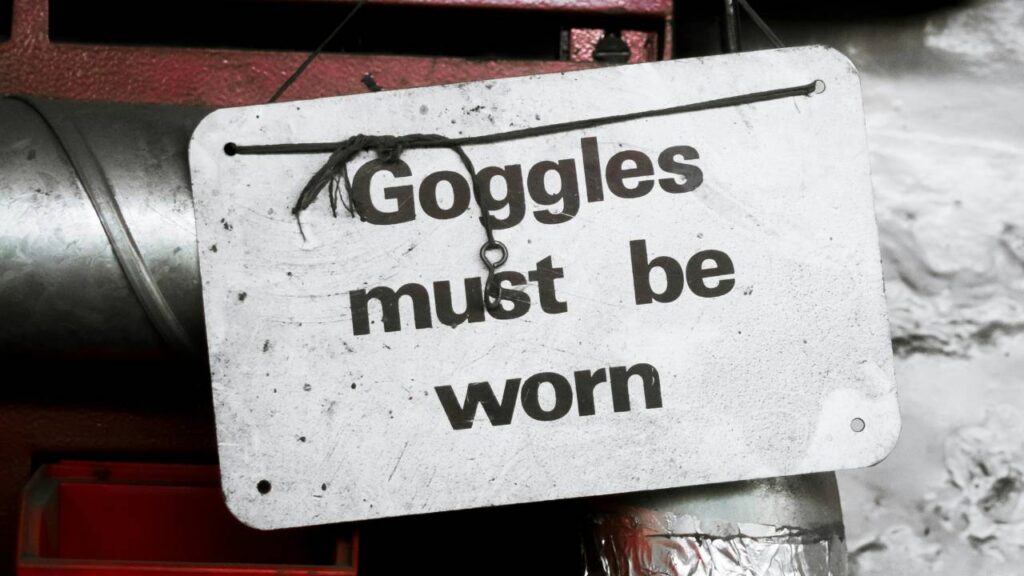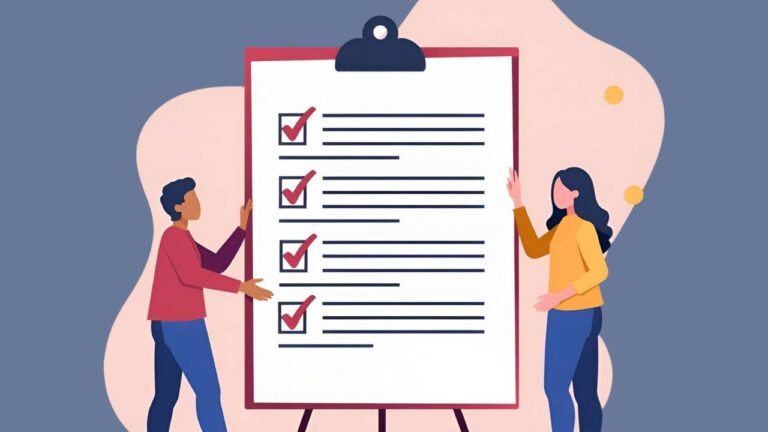In the realm of workplace management, ensuring health and safety compliance is more than a legal requirement; it’s an essential practice for protecting workers and maintaining productivity. In Ireland, companies are tasked with adhering to specific guidelines that safeguard employees. A robust checklist for health and safety compliance helps organisations prioritise safety and mitigate risks effectively.
Navigating the complexities of these regulations may seem daunting, but a well-structured approach simplifies the process. Employers can focus on key areas such as risk assessments, employee training, and emergency procedures. By addressing these components, companies not only meet statutory obligations but also foster a safer working environment.
This blog post explores the essential elements of compliance and highlights practical steps organisations in Ireland can take. Through understanding and implementing these measures, businesses can ensure they meet their legal responsibilities while promoting a culture of safety.
Understanding Health and Safety Legislation in Ireland
Health and safety legislation is crucial for ensuring workplace well-being in Ireland. It sets out the legal obligations for employers and employees alike to maintain a safe environment.
Health and Safety at Work Act 2005
The Health and Safety at Work Act 2005 is the cornerstone of Ireland’s workplace safety laws. This Act outlines the duties of employers, requiring them to ensure the safety, health, and welfare of employees. Employers must implement comprehensive safety measures, from risk assessments to safety training.
Employees also have responsibilities under the Act to take reasonable care of their own safety and that of others. Compliance with this Act is essential, as it provides guidelines for various sectors and can influence operational procedures. Violations may lead to legal consequences, making adherence imperative for businesses across Ireland.
Roles of the Health and Safety Authority (HSA)
The Health and Safety Authority (HSA) plays a pivotal role in enforcing health and safety legislation in Ireland. It is responsible for the inspection and monitoring of workplaces, ensuring compliance with relevant laws and standards. The HSA provides guidance and information resources to assist businesses in meeting legal obligations.
Furthermore, the HSA has the authority to investigate accidents and incidents, providing oversight and recommendations. Through advisory services and training, the HSA supports organisations in fostering a culture of safety. It serves as a critical link between legislative requirements and practical implementation within Irish businesses.
Developing a Safety Statement

Creating an effective safety statement is crucial for ensuring workplace safety and compliance. It involves careful assessment of potential hazards, assigning responsibilities to skilled individuals, and maintaining ongoing evaluations for improvements.
Identifying On-Site Hazards
Recognising on-site hazards is a fundamental step in developing a comprehensive safety statement. Regular site inspections and employee feedback are pivotal in identifying potential risks. PAT testing, crucial for verifying electrical equipment safety, plays a significant role here. Good practices also include examining all work processes, chemicals, and machinery.
Neglecting essential tasks like PAT testing can result in penalties for failing to PAT test, underlining the importance of thorough checks. Keeping an accurate record of identified risks ensures that all potential hazards are managed appropriately.
Assigning Competent Persons
A safety statement must designate competent individuals to manage specific safety tasks. Competence is determined by evaluating someone’s experience, training, and ability to recognise risks effectively. Delegation of responsibilities is essential for ensuring a comprehensive approach to safety.
The competent person should be trusted and knowledgeable about the site’s operations. Establishing clear roles reduces the risk of oversight and ensures prompt response to incidents. It also reinforces accountability, which enhances overall safety management.
Regular Reviews and Updates
To remain effective, a safety statement requires regular reviews and updates. This ensures it reflects any changes in operations or regulations. Scheduled assessments help track the efficiency of safety measures and uncover new hazards that may arise.
Amending the safety statement in response to incidents or near misses is vital. Changes in staff or technology are also reasons to review safety procedures. By keeping the document current, employers align with Irish safety laws and contribute to a safer work environment.
Conducting Risk Assessments
Conducting risk assessments in Ireland is essential for ensuring workplace safety and compliance with regulatory requirements. This involves identifying potential hazards, estimating the severity and likelihood of these risks, and implementing appropriate control measures.
Risk Identification
Identifying risks is the first step in any effective risk assessment. Organisations must clearly outline potential hazards that may pose threats to employees, equipment, and the environment. A comprehensive approach involves evaluating both physical and chemical hazards, as well as ergonomic and psychological factors.
During identification, all information should be meticulously documented in a written programme, ensuring every identified risk is catalogued for assessment. This systematic documentation not only ensures that risks are recognised but also helps in prioritising them. Each identified hazard must be recorded accurately for future reference.
Severity and Likelihood Estimation
Estimating the severity and likelihood of identified risks is crucial. It involves assessing the potential impact a hazard might have and the probability of it occurring. The severity considers factors like injury levels, potential for fatality, and impacts on health, while likelihood evaluates how often the risk might arise.
A thorough assessment places risks into categories, helping determine their importance. Incorporating data from past incidents can enhance accuracy. Prioritisation of risks can guide decision-making and resource allocation, ensuring high-risk scenarios receive immediate attention. Clarity and precision in this process are essential to establish a robust risk management framework.
Implementation of Control Measures
Control measures aim to mitigate identified risks once severity and likelihood are evaluated. Selecting the right measures is essential, beginning with the elimination of hazards where feasible. When elimination is not possible, substitution with less hazardous materials or processes is considered.
Engineering controls, such as physical barriers or improved ventilation, can often reduce risk exposure. Administrative controls involve training and procedural changes, while personal protective equipment (PPE) serves as a last resort. Implementing and regularly reviewing these control measures is a proactive approach to maintaining safety. Each control measure should be monitored to ensure its effectiveness over time, and adjustments should be made as necessary.
Creating a Safe Workplace Environment

Ensuring a safe workplace involves attention to infrastructure and equipment safety as well as effective emergency preparedness. Prioritising these areas helps protect employees and comply with health and safety regulations.
Infrastructure and Equipment Safety
For workplaces in Ireland, maintaining safe infrastructure requires regular inspection and maintenance of facilities and equipment – including IT equipment. Businesses must ensure that all machinery is up to date with safety standards.
Protective equipment such as helmets or gloves should be available where necessary. Clear signage detailing any potential hazards is crucial. This includes warning signs, instructions for using equipment safely, and emergency exit indicators.
Neglecting basic upkeep or making electrical compliance mistakes – such as ignoring PAT testing schedules or using unqualified personnel – can lead to serious safety breaches and costly penalties.
Effective lighting and ventilation systems also play a significant role in preventing accidents. The Health and Safety Authority recommends that walkways be free from obstructions and clearly marked. Regular safety audits help identify risks and ensure compliance with best practice.
Emergency Preparedness and Response
Emergency preparedness is essential for creating a secure work environment. Employers should develop a comprehensive emergency response plan tailored to their specific workplace needs. These plans must be readily accessible to all employees and regularly reviewed.
Training sessions on emergency procedures such as fire drills and first aid are vital parts of this preparation. They should be conducted periodically to refresh staff knowledge and skills.
Hiring safety officers to oversee these processes can enhance readiness. Every employee should be aware of their role during an emergency. Businesses should invest in first aid kits and fire extinguishers, ensuring they are well-stocked and maintained. Enabling rapid response minimises potential harm and disruption.
Health and Safety Training Programmes
Health and safety training serves as a pillar for compliance in Ireland, ensuring that workplaces adhere to regulations and mitigate risks. Comprehensive programmes encompass both mandatory courses and continuous skill development to maintain standards.
There is a wide range of safety courses in Ireland available to businesses looking to upskill their staff and meet compliance obligations. These include industry-specific training tailored to construction, healthcare, and office-based environments. Choosing the right course helps ensure employees are well-prepared to manage on-site risks effectively.
Mandatory Training Courses
In Ireland, certain training courses are mandatory to ensure compliance with health and safety regulations. These courses often include essential topics such as fire safety, first aid, and manual handling. They aim to equip all employees with critical skills to handle common workplace hazards effectively.
A competent person, typically a certified trainer, is responsible for delivering these courses. Best practice dictates that companies should regularly update their training content to reflect any changes in legislation or emerging risks. This ensures that all staff remain aware of their responsibilities and the procedures required to maintain a safe working environment.
Continuous Skill Development
Beyond mandatory requirements, continuous skill development plays a crucial role in maintaining high health and safety standards. Training programmes focused on continuous learning encourage employees to deepen their expertise and adapt to new challenges. Regular workshops and refresher courses help to reinforce knowledge and highlight emerging best practice.
Organisations in Ireland are encouraged to foster a culture of learning, empowering workers to proactively engage in their professional growth. Access to up-to-date training materials and scenario-based learning opportunities is vital. By investing in continuous skill development, businesses not only comply with health and safety regulations but also enhance their overall safety culture.
Sector-Specific Safety Considerations

In Ireland, health and safety compliance varies significantly between sectors. Each industry has its own unique risks and regulations that must be adhered to, ensuring the well-being of workers and the public.
Construction Industry Compliance
Construction remains one of the most hazardous industries, necessitating stringent safety measures. Employers in Ireland must conduct detailed risk assessments and implement appropriate safety protocols. This includes providing personal protective equipment (PPE) and ensuring all employees receive adequate training.
Site managers are responsible for maintaining safe work environments by regularly inspecting equipment and structures. Compliance with the Safety, Health and Welfare at Work (Construction) Regulations 2013 is mandatory, covering various aspects such as site safety checks and welfare facility provisions. Strict adherence to these regulations is crucial to reduce accidents and legal liabilities.
Healthcare Sector Guidelines
The healthcare sector faces unique challenges with infection control and patient safety. Irish healthcare facilities are required to follow guidelines that minimise risks to both staff and patients. This involves implementing hygiene protocols and ensuring that medical equipment is sterilised and functioning properly.
Staff must undergo regular training on emergency procedures, manual handling, and hazardous substance management. Compliance with the Health and Safety Authority’s guidelines for healthcare is essential to maintaining a safe healthcare environment. Healthcare providers must continuously audit practices to ensure they meet evolving safety standards and address any identified deficiencies promptly.
Ensuring Compliance and Best Practices
Ensuring compliance with health and safety regulations in Ireland involves understanding the requirements of the Health and Welfare at Work Act 2005. This act serves as the cornerstone for establishing workplace safety standards. It outlines duties for employers and employees to ensure a safe working environment.
Risk assessment is crucial in identifying potential hazards. Employers must undertake regular assessments to evaluate workplace risks, ensuring appropriate measures are in place to mitigate them. It’s essential to document findings and review practices periodically to stay compliant with all regulations.
Adopting best practices is fundamental for compliance. This includes implementing effective communication strategies and promoting a culture of safety. Incorporating training programmes helps increase awareness among employees, providing them with necessary knowledge about safety protocols and emergency procedures.
Collaboration with the Health and Safety Executive (HSE) promotes adherence to the set standards. Consulting the HSE for guidance can offer insights into improving health and safety practices. This partnership assists organisations in staying informed about legislative changes and maintaining compliance.
Regular audits and inspections are an effective method for ensuring compliance. They help identify non-compliance areas and suggest corrective actions. Conducting audits allows enterprises to monitor internal processes and align them with legal requirements.
Keeping detailed records of safety measures, training sessions, and risk assessments is fundamental to demonstrating compliance. These records serve as proof of adherence to regulations and help in audits conducted by the authorities. Ultimately, meticulous documentation supports continuous improvement and compliance.
Conclusion
Health and safety compliance in Ireland is crucial for ensuring the well-being of employees and the public. Adhering to regulations helps businesses minimise risks and create safer workplace environments. It involves a commitment to regular review and updates of safety protocols.
Businesses should prioritise training and education for employees to keep them informed about safety practices. This not only enhances compliance but also fosters a culture of safety within the organisation.
Regular audits and inspections are essential. These activities help identify potential hazards and facilitate timely interventions, reducing the likelihood of accidents. Companies should record these processes meticulously for accountability and review.
Employers are encouraged to engage with health and safety consultants. Professionals can provide specific insights tailored to different industries, helping businesses stay ahead in compliance.
Staying updated on legal requirements is also necessary. Regulations may change, and businesses must adjust their policies to reflect these updates to avoid penalties.
By fostering a proactive approach toward health and safety, businesses in Ireland can ensure compliance. This creates a safer workplace, ultimately benefiting the company and its stakeholders.
